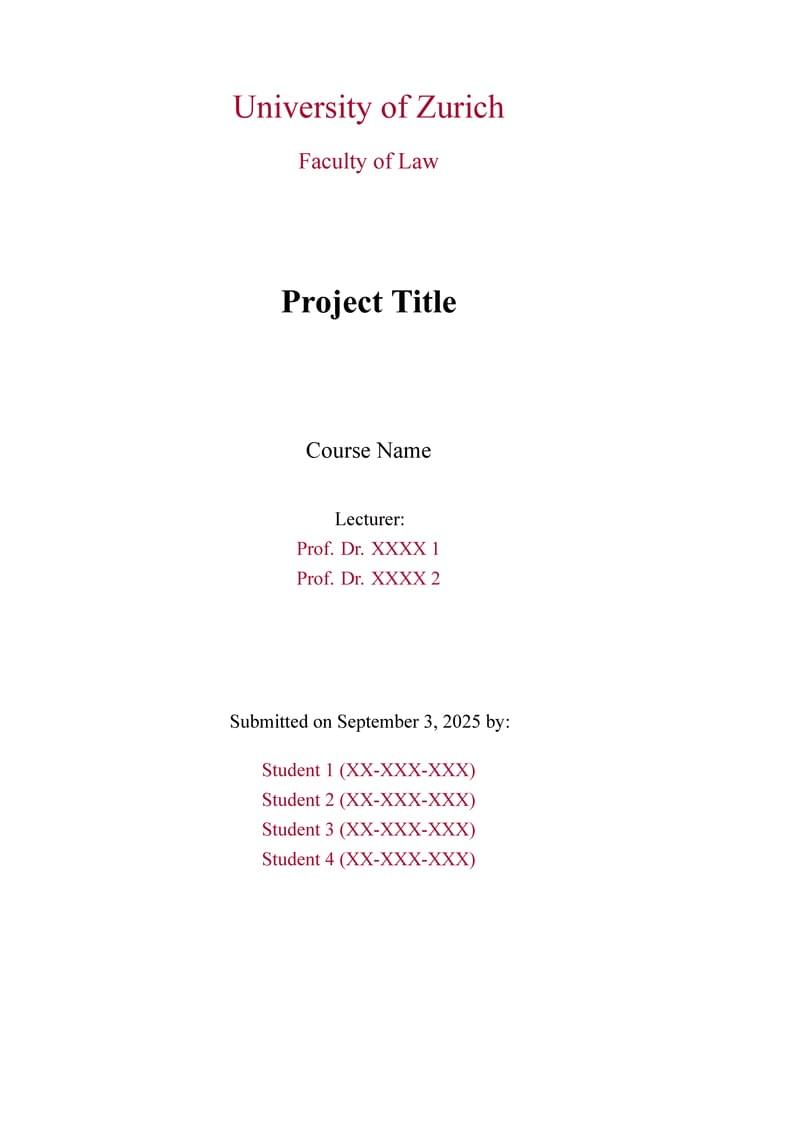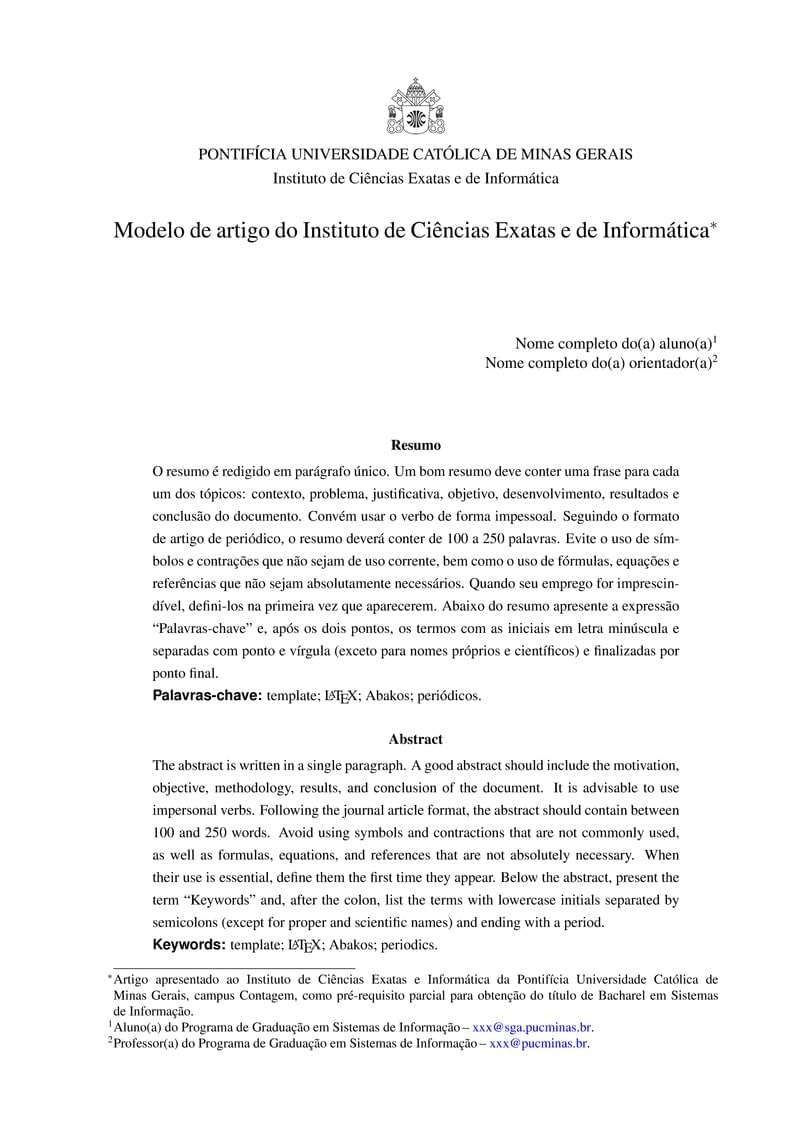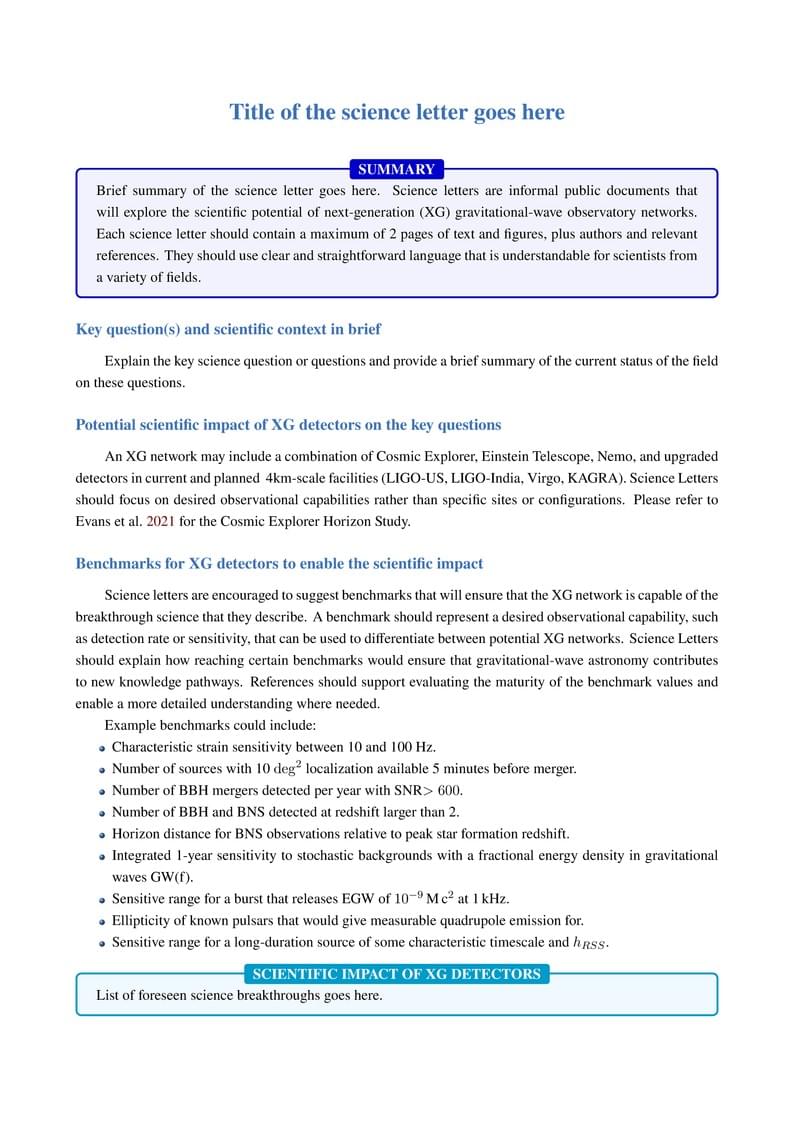Recent

Plantilla que contiene la estructura básica para cumplir con el formato "APA7" de estudiantes universitarios. Modificado por última vez: 27/07/21 @COPYLEFT

This is a paper/thesis template (Version 1.11, October 2025) provided by the Digital Humanities Lab at the University of Basel. It was designed as a starting point for students in the (Digital) Humanities who are new to LaTeX but wish to use it for writing seminar papers or theses.

Template for Accademic Essay according to University of Zürich official Guidelines. Link to official guidelines: https://www.ius.uzh.ch/dam/jcr:12966ebb-cf14-400c-ae3b-fedb2c69e3bd/UZH_Guidelines%20for%20Academic%20Essays.pdf

La plantilla presentada organiza un documento académico en varias secciones clave: la Introducción plantea el problema y describe su relevancia, mientras que la sección de Concepto, Metodología o Técnica incluye definiciones y ecuaciones necesarias para el marco teórico. La Solución Propuesta describe el diseño e integración de conceptos, apoyándose en cálculos y rutinas de software, seguido por Simulaciones y Pruebas que verifican la efectividad de la solución. En la sección de Resultados, se discuten los hallazgos obtenidos con representaciones gráficas. Finalmente, Conclusiones y Recomendaciones sintetiza los resultados y sugiere direcciones futuras, mientras que la Bibliografía sigue el formato APA para citar las fuentes. Esta estructura facilita una presentación clara y coherente de la investigación en el ámbito de las ciencias económicas y administrativas.

Este template foi especialmente desenvolvido para os estudantes da MUST University com o objetivo de padronizar a formatação dos trabalhos acadêmicos de todas as disciplinas. Utilizar este modelo ajudará a garantir que todos os requisitos de formatação sejam atendidos, facilitando tanto a escrita quanto a avaliação dos papers.

Modelo Canônico de Artigo da PUC Minas com adequações às novas alterações (2024) da ABNT.

A simple report template I like to use for my PhD. Simply add your details, university logo and bibliography to start writing.

The Art, Science, and Engineering of Programming is a new journal created with the goal of placing the wonderful art of programming in the map of scholarly works. Many academic journals and conferences exist that publish research related to programming, starting with programming languages, software engineering, and expanding to the whole Computer Science field. Yet, many of us feel that, as the field of Computer Science expanded, programming, in itself, has been neglected to a secondary role not worthy of scholarly attention. That is a serious gap, as much of the progress in Computer Science lies on the basis of computer programs, the people who write them, and the concepts and tools available to them to express computational tasks. The Art, Science, and Engineering of Programming aims at closing this gap by focusing primarily on programming: the art itself (programming styles, pearls, models, languages), the emerging science of understanding what works and what doesn’t work in general and in specific contexts, as well as more established engineering and mathematical perspectives. This is an example of and a guide to writing articles for The Art, Science, and Engineering of Programming.

A template for short Cosmic Explorer Science Letters
\begin
Discover why over 20 million people worldwide trust Overleaf with their work.